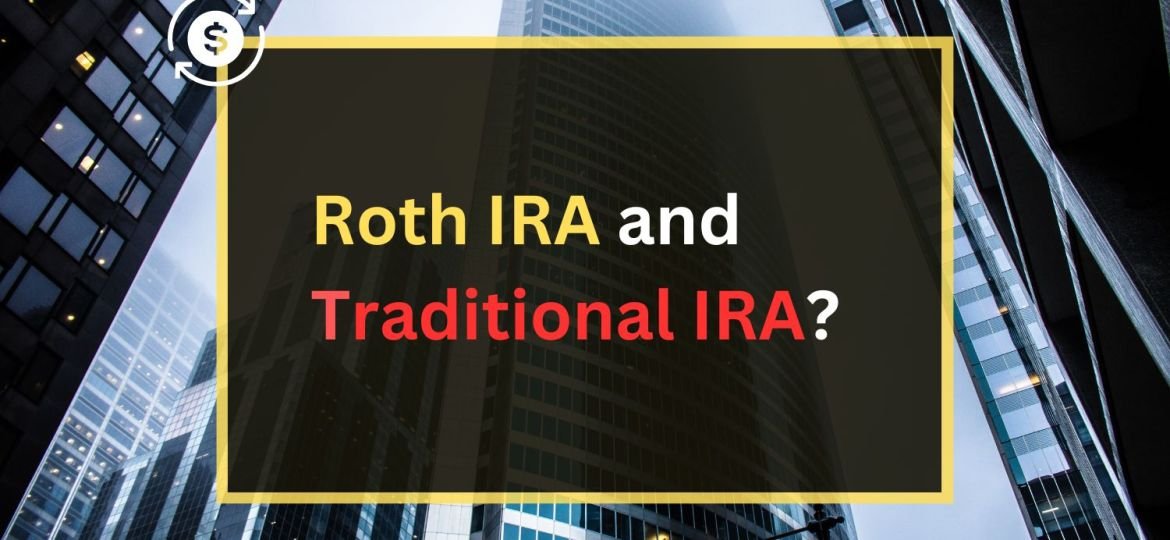
Individual Retirement Accounts (IRAs) are popular investment vehicles that allow individuals to save and invest for their retirement. While both Roth IRAs and traditional IRAs share the common goal of helping people save for the future, there are several key differences between the two that are important to understand. In this comprehensive blog post, we’ll explore the defining characteristics of Roth IRAs and traditional IRAs, highlighting the advantages and disadvantages of each to help you determine which option may be the better fit for your retirement planning needs.
Understanding Roth IRAs
A Roth IRA is a type of individual retirement account that is funded with after-tax dollars. This means that you contribute money that has already been taxed, rather than pre-tax income like with a traditional IRA. The main benefit of a Roth IRA is that qualified withdrawals in retirement are tax-free. As long as you meet the eligibility requirements, you can withdraw your contributions and earnings without owing any additional taxes.
Roth IRA Contribution Limits
In 2023, the annual contribution limit for Roth IRAs is $6,500 for individuals under age 50, and $7,500 for those 50 and older. However, these limits are subject to phase-outs based on your modified adjusted gross income (MAGI). Single filers with a MAGI between $138,000 and $153,000, and married couples filing jointly with a MAGI between $218,000 and $228,000, will see their contribution limits gradually reduced. Those with a MAGI above the upper thresholds are not eligible to contribute to a Roth IRA at all.
Tax-Free Withdrawals in Retirement
One of the biggest advantages of a Roth IRA is that qualified withdrawals in retirement are completely tax-free. As long as you’re at least 59 1/2 years old and your Roth IRA has been open for at least 5 years, you can take distributions without owing any federal income taxes. This can be especially beneficial if you expect to be in a higher tax bracket during retirement.
No Required Minimum Distributions (RMDs)
Another key benefit of a Roth IRA is that there are no required minimum distributions (RMDs) during the account owner’s lifetime. This means you can let your Roth IRA assets continue growing tax-free for as long as you live, passing any remaining balance on to your heirs. In contrast, traditional IRAs require you to start taking RMDs at age 72, which can increase your taxable income in retirement.
Roth IRA Eligibility and Contribution Limits
To be eligible to contribute to a Roth IRA, your MAGI must fall below certain income thresholds. In 2023, the phaseout ranges are:
- Single filers: $138,000 to $153,000
- Married filing jointly: $218,000 to $228,000
- Married filing separately: $0 to $10,000
If your income exceeds these limits, you may still be able to contribute to a Roth IRA indirectly through a Roth conversion or a backdoor Roth IRA strategy.
Understanding Traditional IRAs
A traditional IRA is a retirement savings account that is funded with pre-tax dollars. This means the contributions you make are tax-deductible in the year you make them, lowering your taxable income. However, withdrawals in retirement are taxed as ordinary income.
Traditional IRA Contribution Limits
In 2023, the annual contribution limit for traditional IRAs is also $6,500 for individuals under age 50, and $7,500 for those 50 and older. However, the ability to deduct your contributions may be limited if you or your spouse has a retirement plan at work and your income exceeds certain thresholds.
Taxation of Withdrawals
The main downside of a traditional IRA is that withdrawals in retirement are taxed as ordinary income. This means your distributions will be subject to federal income taxes, as well as any applicable state taxes. The amount of tax you owe will depend on your tax bracket during retirement.
Required Minimum Distributions (RMDs)
Traditional IRAs also require you to start taking required minimum distributions (RMDs) at age 72. These mandatory withdrawals are calculated based on your account balance and life expectancy, and failure to take the full RMD amount can result in steep penalties.
Eligibility for Tax-Deductible Contributions
The ability to deduct your traditional IRA contributions is phased out if you or your spouse has access to a retirement plan at work and your MAGI exceeds certain limits. In 2023, the phaseout ranges are:
- Single filers with a retirement plan at work: $73,000 to $83,000
- Married filing jointly with a retirement plan at work: $116,000 to $136,000
- Married filing separately with a retirement plan at work: $0 to $10,000
If you don’t have a retirement plan at work, you can generally deduct the full amount of your traditional IRA contributions regardless of your income level.
Key Differences Between Roth IRAs and Traditional IRAs
Now that we’ve covered the basics of Roth IRAs and traditional IRAs, let’s take a closer look at the key differences between the two:
Taxation of Contributions
- Roth IRA contributions are made with after-tax dollars, while traditional IRA contributions are made with pre-tax dollars.
Taxation of Withdrawals
- Roth IRA withdrawals in retirement are tax-free, while traditional IRA withdrawals are taxed as ordinary income.
Income Limits
- Roth IRA contributions are subject to income phase-outs, while traditional IRA deductibility is limited based on income and retirement plan access.
Required Minimum Distributions (RMDs)
- Roth IRAs have no RMDs during the account owner’s lifetime, while traditional IRAs require RMDs starting at age 72.
Contribution Limits
- The annual contribution limits for Roth IRAs and traditional IRAs are the same ($6,500 under age 50, $7,500 age 50 and older in 2023).
Eligibility
- Roth IRA eligibility is based on MAGI, while traditional IRA eligibility is more complex and depends on whether you or your spouse have a retirement plan at work.
Choosing Between a Roth IRA and a Traditional IRA
Deciding between a Roth IRA and a traditional IRA ultimately comes down to your current and future tax situation. Here are some factors to consider when making your choice:
Current Tax Bracket
If you’re in a relatively low tax bracket now, contributing to a Roth IRA can make sense since you’ll be paying taxes on the contributions upfront at a lower rate. Conversely, if you’re in a higher tax bracket, the tax deduction from a traditional IRA contribution may be more beneficial.
Projected Tax Bracket in Retirement
If you expect to be in a higher tax bracket during retirement, a Roth IRA can be advantageous since your withdrawals will be tax-free. However, if you anticipate being in a lower bracket in retirement, a traditional IRA may be the better choice.
Time Horizon
Roth IRAs tend to be more beneficial the longer you have until retirement. The longer your contributions and earnings can grow tax-free, the more you’ll potentially save in taxes down the road.
Income Limits
If your income is above the Roth IRA contribution limits, you may still be able to contribute to a traditional IRA, either directly or through a backdoor Roth IRA strategy.
Access to Funds
Roth IRAs allow you to withdraw your contributions at any time without penalty, which can provide more flexibility. Traditional IRAs generally have stricter withdrawal rules and penalties.
Estate Planning
Roth IRAs can be more advantageous for estate planning purposes, as they don’t have RMDs during the account owner’s lifetime and can be passed on to heirs tax-free.
Ultimately, there’s no one-size-fits-all answer – the best choice will depend on your unique financial situation and retirement goals. It’s often helpful to consult a financial advisor who can provide personalized guidance based on your specific circumstances.
Want YouTube success, but camera shy?
Tube Mastery 3.0 teaches you to build profitable channels WITHOUT showing your face! ✅ Niche selection, video creation (no camera!), growth strategies & more. See student results: 40,000 subscribers in 5 months & $4,000 daily income! Learn the faceless YouTube method & ditch the camera! ➡️ [Link here]
Conclusion
Both Roth IRAs and traditional IRAs offer valuable opportunities to save and invest for retirement, but the differences between the two can have a significant impact on your long-term financial outcomes. By understanding the key distinctions, such as the taxation of contributions and withdrawals, income limits, and RMD requirements, you can make a more informed decision about which IRA option is the better fit for your needs.
Ultimately, the choice between a Roth IRA and a traditional IRA often comes down to your current and anticipated future tax situation, time horizon, and personal financial goals. Carefully evaluating these factors can help you maximize the potential benefits of your retirement savings and ensure a more secure financial future.
If you’re still unsure about which IRA is right for you, consider consulting a qualified financial advisor who can provide personalized guidance and help you develop a comprehensive retirement planning strategy. With the right approach, you can take full advantage of the tax-advantaged savings opportunities offered by both Roth IRAs and traditional IRAs.

















